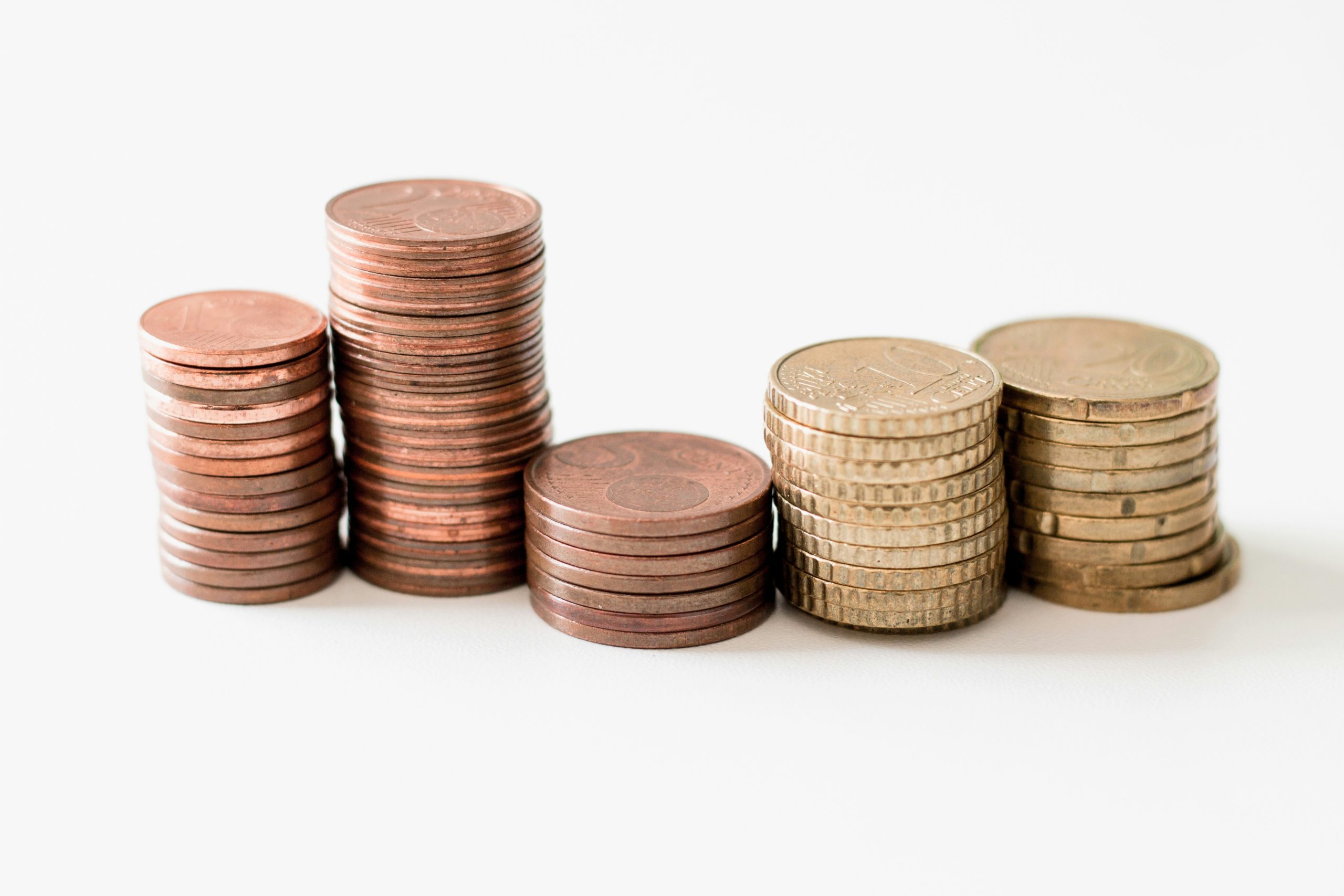A Micromanaged Economy: The Federal Reserve’s Century of Failed Intervention

By Anna Flickinger*
For more than a century, the Federal Reserve has been praised as the pillar of America’s financial system, yet its very existence has become the driving force behind the cycles of inflation, recession, and crisis it was designed to prevent.
The Federal Reserve’s Evolution from Economic Stabilizer to Market Shaper
The Federal Reserve (Fed) was established in 1913 as a central banking system designed to stabilize the U.S. financial system following a series of bank panics, most notably the Panic of 1907.1 The Fed’s original responsibilities were relatively narrow. The Fed was to serve as a “lender of last resort,” providing liquidity to banks in times of financial crisis and maintaining the security of the banking system.2 Additionally, the Fed would serve as the issuing authority for U.S. currency, making it responsible for controlling the supply of U.S. dollars in circulation.3 Importantly, this latter power was constrained by the gold standard, which required every dollar issued to be backed by gold held in the Fed’s reserves.4
This changed in 1933 when President Franklin D. Roosevelt, responding to The Great Depression, took the U.S. off the gold standard domestically.5 Unconstrained by the gold standard, the Fed was able to freely increase the money supply to stimulate economic recovery.6 Increased monetary flow helped counter the devastating effects of deflation by lowering borrowing costs and encouraging spending.7 Further expanding the Fed’s power, the Banking Act of 1935 restructured the Fed by centralizing authority in the Federal Open Market Committee (FOMC) and the Board of Governors, diminishing the independence of the Fed’s decentralized network of regional banks.8 The FOMC was given control over open market operations – the buying and selling of government securities, such as Treasury bonds – to influence the supply of money and affect spending and interest rates.9
Open market operations, a powerful tool of monetary policy, are used to reach the FOMC’s target federal funds rate.10 The federal funds rate is the interest rate at which banks lend reserve balances to each other overnight, and though it may seem disconnected from daily life, it has cascading economic effects.11 If the FOMC wants to increase the target rate, it sells securities, withdrawing money from the banking system and lowering the amount of reserves that banks have available to lend, which results in higher interest rates and slowed economic activity.12 On the other hand, if the FOMC wants to lower the target rate, it buys securities, injecting money into the banking system and increasing the amount of reserves that banks have available to lend, which results in decreased interest rates and incentivized borrowing.13 This critical economic factor is decided by the twelve members of the FOMC who meet eight times a year to reevaluate it.14
How the Federal Reserve Fuels Both Inflation and Recession
Fast forward to the 1960s, when the Fed kept relatively low interest rates to help support government spending on the Vietnam War and domestic Great Society programs.15 While these “easy money” policies stimulated short-term economic growth, they also sowed the seeds of long-term inflationary pressure.16 To understand why, it helps to look more closely at just how the Fed’s interest rates affect the economy at large.
When the Fed keeps interest rates low and increases the money supply, borrowing becomes cheaper for consumers and businesses.17 This stimulates the economy by encouraging more spending and investment and increases the overall demand for goods and services.18 However, if that demand grows faster than the economy’s ability to produce, it exceeds supply, prompting businesses to raise prices.19 This is called demand-pull inflation.20 Similarly, while an increase in spending and investment can initially boost employment as businesses hire more employees to meet higher demand, over time, prices can rise faster than wages leading to a decrease in purchasing power.21 The result is an economy with high inflation and stagnant growth.22 This is known as stagflation and is essentially what happened leading up to the Great Inflation of the 1970s.23 As increased spending and economic activity drive inflation, the Fed will respond by increasing the federal funds interest rate to discourage borrowing and slow down economic activity.24
As the Fed-driven inflation surged in the 1970s, the Fed adopted a “stop-and-go” approach – repeatedly raising interest rates to curb inflation, then lowering them again to fight recession – which only entrenched inflation expectations and failed to address the stagflation.25 It was not until Paul Volcker became Fed Chair in 1979 that a truly drastic response occurred.26 Volcker allowed the federal funds interest rate to increase to nearly 20%, the highest it has ever been.27 This triggered a severe recession with unemployment rates climbing to nearly 10%.28 Volcker’s policy ultimately succeeded in bringing inflation down from 13.5% in 1980 to 3.2% by 1983 (the Fed’s target rate is 2%29), but it came at the steep cost of ruined livelihoods, failed businesses, and numerous bankruptcies.30
Over the years, the recurring pattern is unmistakable: the Fed lowers rates to stimulate growth, resulting in rapid credit expansion, speculative bubbles, and inflation. Once the economy appears to be “overheating,” the Fed reverses course by increasing rates, only to then trigger a recession. In the aftermath, the Fed cuts rates again to restimulate the economy, starting the cycle anew.This cycle played out during the “dot-com bubble” in the late 1990s, when low rates fueled tech speculation before rate hikes burst the market, and again in the 2008 financial crisis, when low post-recession rates inflated a housing bubble that collapsed under progressively increasing rates.31 We are now in the middle of another cycle following the COVID-19 pandemic, where near-zero interest rates and stimulus measures fueled rapid inflation, and where the Fed has responded with its most aggressive rate hike in decades, raising the federal funds rate from 0.05% in 2020 to 5.33% in 2024.32 As of September 2025, the rate stands at 4.22%.33
The Federal Reserve’s Incentive Problem and Free Market Fix
Through its manipulation of interest rates, the Fed interferes with the free market system by overriding natural market signals and creating perverse business incentives.34 In a free market, interest rates rise and fall naturally based on how much people save and how much businesses want to borrow.35 When interest rates rise naturally because savings are low or demand is high, businesses are more cautious and invest only in projects likely to be profitable long-term.36 When rates fall because savings are abundant, businesses can feel more confident in expanding.37
In contrast, under Fed-determined rates, business incentives become distorted.38 When rates are low, businesses feel like risk is low and are more likely to take on excessive debt, expand too quickly, or invest in speculative ventures.39 Then, when inflation hits and the Fed raises rates, those same businesses face higher debt costs and losses, forcing cutbacks or bankruptcies.40 This hits smaller businesses particularly hard as they usually have less capital and bargaining power and can’t as easily absorb higher costs.41 In essence, the Fed rewards short-term risk-taking over decisions that promote sustainable growth, which especially harms small businesses, “the cornerstone of capitalism.” 42 Dismantling the Federal Reserve could return the determination of interest rates to the free market, thereby eliminating perverse business incentives and artificial inflation and recession cycles, while also reintroducing more consistency and predictability in the economy.43
In fact, contrary to popular belief, historical evidence actually suggests that a return to free-market-based banking would not result in renewed banking panics but could restore stability.44 “Free banking” systems, such as those in nineteenth-century Scotland and pre-central-bank Canada, have seen fewer panics, steadier credit conditions, and stronger market discipline than the Federal Reserve system we have in the United States today.45 Banks in those free market environments self-regulated through competition and reputation, naturally limiting reckless lending without the need for a central monetary authority.46 Thus, true financial stability will not come from the decision-making of twelve people in a boardroom in Washington but from a free monetary system built on competition and rooted in market discipline.
* J.D. Candidate, Class of 2027, Sandra Day O’Connor College of Law at Arizona State University
- History and Purpose of the Federal Reserve, Fed. Rsrv. Bank of St. Louis, https://www.stlouisfed.org/in-plain-english/history-and-purpose-of-the-fed (last visited Oct. 9, 2025). ↩︎
- David C. Wheelock, Overview: The History of the Federal Reserve, Fed. Rsrv. Hist. (Sept. 13, 2021), https://www.federalreservehistory.org/essays/federal-reserve-history. ↩︎
- The Founding of the Fed, Fed. Rsrv. Bank of N.Y.C., https://www.newyorkfed.org/aboutthefed/history_article.html (last visited Oct. 9, 2025). ↩︎
- Id. ↩︎
- Mrinalini Krishna, When FDR Abandoned the Gold Standard, Investopedia (Apr. 20, 2017, at 6:00 AM EDT), https://www.investopedia.com/news/when-fdr-abandoned-gold-standard/. ↩︎
- Id. ↩︎
- Id. ↩︎
- A.J. Sobczak, Banking Act of 1935 Centralizes U.S. Monetary Control, EBSCO (2023), https://www.ebsco.com/research-starters/history/banking-act-1935-centralizes-us-monetary-control. ↩︎
- Gary Richardson, Alejandro Komai, & Michael Gou, Banking Act of 1935, Fed. Rsrv. Hist. (Nov. 22, 2013), https://www.federalreservehistory.org/essays/banking-act-of-1935. ↩︎
- Open Market Operations, Bd. of Governors of the Fed. Rsrv. Sys. (Sept. 17, 2025), https://www.federalreserve.gov/monetarypolicy/openmarket.htm. ↩︎
- Adam Hayes, What Are Open Market Operations (OMOs), and How Do They Work?, Investopedia (July 15, 2025), https://www.investopedia.com/terms/o/openmarketoperations.asp. ↩︎
- Laura J. Hopper, What Are Open Market Operations? Monetary Policy Tools, Explained, Fed. Rsrv. Bank of St. Louis (Aug. 21, 2019), https://www.stlouisfed.org/open-vault/2019/august/open-market-operations-monetary-policy-tools-explained. ↩︎
- Id. ↩︎
- About the FOMC, Bd. of Governors of the Fed. Rsrv. Sys. (Oct. 8, 2025), https://www.federalreserve.gov/monetarypolicy/fomc.htm. ↩︎
- Helen Fessenden, 1965: The Year the Fed and LBJ Clashed, Fed. Rsrv. Bank of Richmond (2016), https://www.richmondfed.org/publications/research/econ_focus/2016/q3-4/federal_reserve. ↩︎
- Michael Bryan, The Great Inflation, Fed. Rsrv. Hist. (Nov. 22, 2013), https://www.federalreservehistory.org/essays/great-inflation; Nathan Lewis, “Money Printing” in the 1960s, Discovery Inst. (Aug. 15, 2021), https://wealthandpoverty.center/2021/08/15/money-printing-in-the-1960s/. ↩︎
- How Does the Federal Reserve Affect Inflation and Employment?, Bd. of Governors of the Fed. Rsrv. Sys.,https://www.federalreserve.gov/faqs/money_12856.htm (July 19, 2024). ↩︎
- Id. ↩︎
- Lida R. Weinstock, Cong. Rsch. Serv., IF10477, Introduction to U.S. Economy: Inflation (2025). ↩︎
- Id. ↩︎
- Bryan, supra note 16. ↩︎
- Id. ↩︎
- Id. ↩︎
- Why Does the Fed Care about Inflation?, Fed. Rsrv. Bank of Cleveland, https://www.clevelandfed.org/center-for-inflation-research/inflation-101/why-does-the-fed-care-start (last visited Oct. 19, 2025). ↩︎
- Federico Mandelman & Brent Meyer, Lessons from the Past: Can the 1970s Help Inform the Future Path of Monetary Policy?, Fed. Rsrv. Bank of Atlanta (Aug. 31, 2022), https://www.atlantafed.org/blogs/macroblog/2022/08/31/can-1970s-help-inform-future-path-of-monetary-policy. ↩︎
- Tim Sablik, Recession of 1981-82, Fed. Rsrv. Hist. (Nov. 22, 2013), https://www.federalreservehistory.org/essays/recession-of-1981-82. ↩︎
- Federal Funds Effective Rate, FRED (Oct. 1, 2025, at 3:17 PM CDT), https://fred.stlouisfed.org/series/FEDFUNDS. ↩︎
- Id. ↩︎
- Economy at a Glance – Inflation (PCE), Bd. of Governors of the Fed. Rsrv.Sys. (Aug. 2, 2024), https://www.federalreserve.gov/economy-at-a-glance-inflation-pce.htm. ↩︎
- Consumer Price Index, 1913-, Fed. Rsrv. Bank of Minneapolis, https://www.minneapolisfed.org/about-us/monetary-policy/inflation-calculator/consumer-price-index-1913- (last visited Oct. 9, 2025). ↩︎
- Luka Nikolic, A Tale of Two Bubbles: How the Fed Crashed the Tech and the Housing Markets, Found. for Econ. Educ. (Aug. 10, 2019), https://fee.org/articles/a-tale-of-two-bubbles-how-the-fed-crashed-the-tech-and-the-housing-markets/. ↩︎
- Betsy Vereckey, Federal Spending Was Responsible for the 2022 Spike in Inflation, Research Shows, MIT Sloan Sch. of Mgmt. (July 17, 2024), https://mitsloan.mit.edu/ideas-made-to-matter/federal-spending-was-responsible-2022-spike-inflation-research-shows; Federal Funds Effective Rate, supra note 27. ↩︎
- Federal Funds Effective Rate, supra note 27. ↩︎
- Matthew Blakey, The Fed Is Powerful—That’s the Problem, Found. for Econ. Educ. (Aug. 13, 2025), https://fee.org/articles/the-fed-is-powerful-thats-the-problem. ↩︎
- Free Market Definition and Impact on the Economy, Investopedia (Aug. 22, 2025), https://www.investopedia.com/terms/f/freemarket.asp; Nick Lioudis, Who Determines Interest Rates?, Investopedia (Aug 13, 2023), https://www.investopedia.com/ask/answers/who-determines-interest-rates/. ↩︎
- David Rosenberg, The Impact of Interest Rates on the Economy, Rosenberg Rsch., https://www.rosenbergresearch.com/2025/05/23/the-impact-of-interest-rates-on-the-economy/ (last visited Oct. 9, 2025). ↩︎
- Id. ↩︎
- Blakey, supra note 34. ↩︎
- Id. ↩︎
- Chris Seabury, How Interest Rates Affect the U.S. Markets, Investopedia (Oct. 15, 2024), https://www.investopedia.com/articles/stocks/09/how-interest-rates-affect-markets.asp. ↩︎
- Lea Strickland, The Federal Reserve’s High Interest Rates: Stifling Small Business Growth in 2025, FOCUS Res. (July 22, 2025), https://www.focusresourcesinc.com/the-federal-reserves-high-interest-rates-stifling-small-business-growth-in-2025. ↩︎
- Seabury, supra note 40; Ray’Chel Wilson, Impact of Federal Interest Rate Policy on Small Businesses, The Cleveland Observer (Oct. 3, 2025), https://cleobserver.com/how-washingtons-interest-rate-policy-is-squeezing-main-street/; Edward L. Glaeser, How to Talk to Millennials About Capitalism, Manhattan Inst. (May 1, 2019), https://manhattan.institute/article/how-to-talk-to-millennials-about-capitalism. ↩︎
- Roy Cordato, Interest Rates Should Be Set by the Market, Not the Fed, The John Locke Found. (Dec. 2, 2019), https://www.johnlocke.org/interest-rates-should-be-set-by-the-market-not-the-fed/. ↩︎
- Roger W. Garrison, Central Banking, Free Banking, and Financial Crises, 9 Rev. of Austrian Econ. 109-127 (Sept. 1996), https://webhome.auburn.edu/~garriro/g2crises.htm?utm. ↩︎
- Kevin Dowd, Howard Bodenhorn, Juan Pablo Couyoumdjian, Thomas R. Gottschang, Patrick Mardini, Adolfo Misel, Alberto Mingardi, Philippe Nataf, Kurt Schuler, George A. Selgin, Ernst Juerg Weber, Lawrence H. White, & Luis Felipe Zegarra, The Experience of Free Banking, Inst. of Econ. Affs. (Dec. 15, 2023), https://iea.org.uk/publications/the-experience-of-free-banking/; Lawrence H. White, What You Should Know About Free Banking History, CATO Inst. (Apr. 28, 2015), https://www.cato.org/blog/what-you-should-know-about-free-banking-history. ↩︎
- Kyan Howe, A Practical Approach to “End the Fed”: Free Banking, Inst. for Youth in Pol’y (July 15, 2021), https://yipinstitute.org/article/a-practical-approach-to-end-the-fed-free-banking; Lawrence H. White, What You Should Know About Free Banking History, CATO Inst. (Apr. 28, 2015), https://www.cato.org/blog/what-you-should-know-about-free-banking-history. ↩︎


